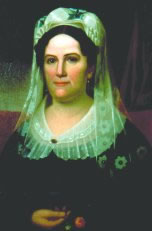Jackson’s Liberty First Spouse Gold Coins
The 7th in the series of commemoratives honoring First Ladies, Jackson’s Liberty First Spouse Coins were issued by the United States Mint on August 28, 2008.
The one-half ounce coins are struck from 24-karat gold and were first issued at a price of $619.95 for the proof version and $599.95 for the uncirculated option. These prices have since changed now that the Mint updates numismatic bullion coin prices based on a weekly performance of gold. (See First Spouse Coin Price Guide for latest Mint prices and sales figures.)
As prescribed in the Presidential $1 Coin Act of 2005, an image of Liberty appears on the obverse (heads) side of the Jackson First Spouse Gold Coin since his wife had died before he took office.
This Liberty is a rendition of the one used on the Capped Bust, Lettered Edge Half-Dollar minted from 1807 to 1836 (during Jackson’s Presidency), designed and sculpted by John Reich.
The reverse contains an image of a mounted Jackson as he led his troops to victory over the British at the Battle of New Orleans. It was designed by Justin Kunz and sculpted by Don Everhart.
(See large Jackson’s Liberty First Spouse Coin images.)
Rachel Jackson Biography (1767-1828)
 President Andrew Jackson served for 2 terms. He was filled with sorrow when he first took the oath of office in March 1829, as his wife of 34 years, Rachel Jackson, had passed away only months before in December. They were thought to have a very close relationship, although their marriage was filled with many periods of separation and allegations of scandal.
President Andrew Jackson served for 2 terms. He was filled with sorrow when he first took the oath of office in March 1829, as his wife of 34 years, Rachel Jackson, had passed away only months before in December. They were thought to have a very close relationship, although their marriage was filled with many periods of separation and allegations of scandal.
Born Rachel Donelson in 1767, she was a child of the wild frontier of Tennessee and Kentucky. She married her first husband, Lewis Robards, in 1785. Lewis was known to be abusive and extremely jealous. He made repeated accusations of adultery towards Rachel, while he himself had been a known adulterer.
Rachel separated from Lewis in 1790, and was under the belief that he had filed for divorce from her. Thinking herself legally able to wed again, she married a young lawyer named Andrew Jackson in 1791, only to find that she was not truly divorced from Robards.
A divorce decree finally attained, the Jacksons re-wed in 1793. Political and military obligations separated the Jacksons many times. He served as a U.S. Representative, U.S. Senator, and was a Major General who led U.S. troops to victory over the British at the Battle of New Orleans. "Old Hickory," as he was nicknamed, was highly popular with the people and won the Presidency over incumbent John Quincy Adams in a very bitter election.
Rachel, not really accepted in Washington D.C. society, was a target of many accusations surrounding her previous divorce debacle. Andrew was quick to defend her (he even killed a man in a duel years before defending her honor), but the insinuations appeared to have taken their toll on her health. Rachel passed away on December 22, 1828. She was buried in the gown she meant to wear at her husband’s inauguration. A grieving Andrew said this at her funeral:
"I am now President of the United States and in a short time must take my way to the metropolis of my country; and, if it had been God’s will, I would have been grateful for the privilege of taking her to my post of honor and seating her by my side; but Providence knew what was best for her. For myself, I bow to God’s will, and go alone to the place of new and arduous duties…"
For most of Jackson’s administration, the duty of White House hostess would fall to Andrew’s niece Emily Donelson. This arrangement was not without its problems, however. Emily would infuriate the President many times over her insistence on snubbing certain members of Washington D.C. society.
Even against Andrew’s orders, Emily refused to socialize with Peggy Eaton, wife of one of his cabinet members. Repeated confrontations led Emily to leave the White House in 1830, only to return in 1831 when the Eatons were stationed in Spain in 1831. Poor health (the onset of tuberculosis) forced Emily to end her duties permanently in 1836.
Additional Resources
- Jackson’s Liberty First Spouse Coin images
- Jackson’s Liberty First Spouse Medal images
- Jackson’s Liberty First Spouse Coin Designs
- US Mint press announcement
- US Mint First Spouse Program
- White House Biography of Rachel Jackson
- Jackson’s Liberty First Spouse Gold Coins Arrive

